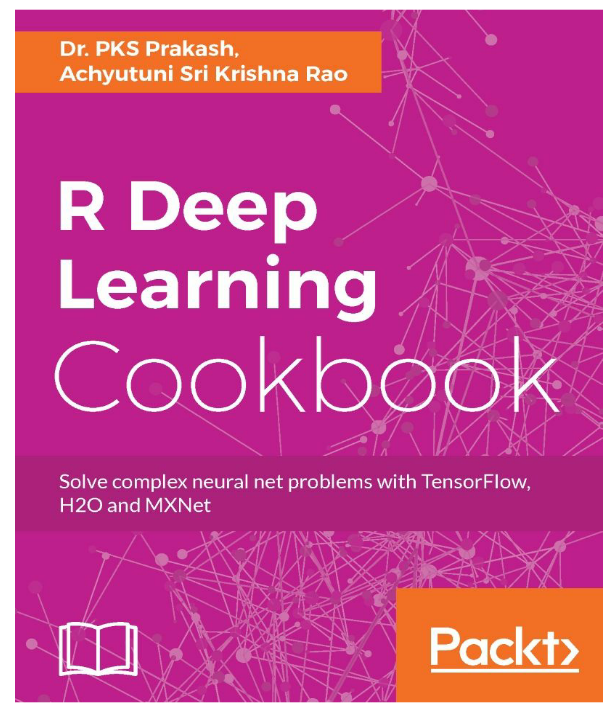阅读权限 255 威望 0 级论坛币 41203 个 通用积分 2.6773 学术水平 7 点 热心指数 5 点 信用等级 5 点 经验 2201 点 帖子 198 精华 1 在线时间 36 小时 注册时间 2015-6-1 最后登录 2024-3-3
########### COLLABORATIVE FILTERING WITH RBM setwd("Set the working directory with movies.dat and ratings.dat files") ## Read movie lens data txt <- readLines("movies.dat", encoding = "latin1") txt_split <- lapply(strsplit(txt, "::"), function(x) as.data.frame(t(x), stringsAsFactors=FALSE)) movies_df <- do.call(rbind, txt_split) names(movies_df) <- c("MovieID", "Title", "Genres") movies_df$MovieID <- as.numeric(movies_df$MovieID) movies_df$id_order <- 1:nrow(movies_df) ratings_df <- read.table("ratings.dat", sep=":",header=FALSE,stringsAsFactors = F) ratings_df <- ratings_df[,c(1,3,5,7)] colnames(ratings_df) <- c("UserID","MovieID","Rating","Timestamp") # Merge user ratings and movies merged_df <- merge(movies_df, ratings_df, by="MovieID",all=FALSE) # Remove unnecessary columns merged_df[,c("Timestamp","Title","Genres")] <- NULL # create % rating merged_df$rating_per <- merged_df$Rating/5 # Generate a matrix of ratings num_of_users <- 1000 num_of_movies <- length(unique(movies_df$MovieID)) trX <- matrix(0,nrow=num_of_users,ncol=num_of_movies) for(i in 1:num_of_users){ merged_df_user <- merged_df[merged_df$UserID %in% i,] trX[i,merged_df_user$id_order] <- merged_df_user$rating_per } # Import tenforflow libraries # Sys.setenv(TENSORFLOW_PYTHON="C:/PROGRA~1/Python35/python.exe") # Sys.setenv(TENSORFLOW_PYTHON_VERSION = 3) library(tensorflow) np <- import("numpy") # Create TensorFlow session # Reset the graph tf$reset_default_graph() # Starting session as interactive session sess <- tf$InteractiveSession() # Model Parameters num_hidden = 20 num_input = nrow(movies_df) vb <- tf$placeholder(tf$float32, shape = shape(num_input)) #Number of unique movies hb <- tf$placeholder(tf$float32, shape = shape(num_hidden)) #Number of features we're going to learn W <- tf$placeholder(tf$float32, shape = shape(num_input, num_hidden)) #Phase 1: Input Processing v0 = tf$placeholder(tf$float32,shape= shape(NULL, num_input)) prob_h0= tf$nn$sigmoid(tf$matmul(v0, W) + hb) h0 = tf$nn$relu(tf$sign(prob_h0 - tf$random_uniform(tf$shape(prob_h0)))) #Phase 2: Reconstruction prob_v1 = tf$nn$sigmoid(tf$matmul(h0, tf$transpose(W)) + vb) v1 = tf$nn$relu(tf$sign(prob_v1 - tf$random_uniform(tf$shape(prob_v1)))) h1 = tf$nn$sigmoid(tf$matmul(v1, W) + hb) # RBM Parameters and functions #Learning rate alpha = 1.0 #Create the gradients w_pos_grad = tf$matmul(tf$transpose(v0), h0) w_neg_grad = tf$matmul(tf$transpose(v1), h1) #Calculate the Contrastive Divergence to maximize CD = (w_pos_grad - w_neg_grad) / tf$to_float(tf$shape(v0)[1]) #Create methods to update the weights and biases update_w = W + alpha * CD update_vb = vb + alpha * tf$reduce_mean(v0 - v1) update_hb = hb + alpha * tf$reduce_mean(h0 - h1) # Mean Absolute Error Function. err = v0 - v1 err_sum = tf$reduce_mean(err * err) # Initialise variables (current and previous) cur_w = tf$Variable(tf$zeros(shape = shape(num_input, num_hidden), dtype=tf$float32)) cur_vb = tf$Variable(tf$zeros(shape = shape(num_input), dtype=tf$float32)) cur_hb = tf$Variable(tf$zeros(shape = shape(num_hidden), dtype=tf$float32)) prv_w = tf$Variable(tf$random_normal(shape=shape(num_input, num_hidden), stddev=0.01, dtype=tf$float32)) prv_vb = tf$Variable(tf$zeros(shape = shape(num_input), dtype=tf$float32)) prv_hb = tf$Variable(tf$zeros(shape = shape(num_hidden), dtype=tf$float32)) # Start tensorflow session sess$run(tf$global_variables_initializer()) output <- sess$run(list(update_w, update_vb, update_hb), feed_dict = dict(v0=trX, W = prv_w$eval(), vb = prv_vb$eval(), hb = prv_hb$eval())) prv_w <- output[[1]] prv_vb <- output[[2]] prv_hb <- output[[3]] sess$run(err_sum, feed_dict=dict(v0=trX, W= prv_w, vb= prv_vb, hb= prv_hb)) # Train RBM epochs= 500 errors <- list() weights <- list() for(ep in 1:epochs){ for(i in seq(0,(dim(trX)[1]-100),100)){ batchX <- trX[(i+1):(i+100),] output <- sess$run(list(update_w, update_vb, update_hb), feed_dict = dict(v0=batchX, W = prv_w, vb = prv_vb, hb = prv_hb)) prv_w <- output[[1]] prv_vb <- output[[2]] prv_hb <- output[[3]] if(i%%1000 == 0){ errors <- c(errors,sess$run(err_sum, feed_dict=dict(v0=batchX, W= prv_w, vb= prv_vb, hb= prv_hb))) weights <- c(weights,output[[1]]) cat(i , " : ") } } cat("epoch :", ep, " : reconstruction error : ", errors[length(errors)][[1]],"\n") } # Plot reconstruction error error_vec <- unlist(errors) plot(error_vec,xlab="# of batches",ylab="mean squared reconstruction error",main="RBM-Reconstruction MSE plot") # Recommendation #Selecting the input user inputUser = as.matrix(t(trX[75,])) names(inputUser) <- movies_df$id_order # Remove the movies not watched yet inputUser <- inputUser[inputUser>0] # Plot the top genre movies top_rated_movies <- movies_df[as.numeric(names(inputUser)[order(inputUser,decreasing = TRUE)]),]$Title top_rated_genres <- movies_df[as.numeric(names(inputUser)[order(inputUser,decreasing = TRUE)]),]$Genres top_rated_genres <- as.data.frame(top_rated_genres,stringsAsFactors=F) top_rated_genres$count <- 1 top_rated_genres <- aggregate(count~top_rated_genres,FUN=sum,data=top_rated_genres) top_rated_genres <- top_rated_genres[with(top_rated_genres, order(-count)), ] top_rated_genres$top_rated_genres <- factor(top_rated_genres$top_rated_genres, levels = top_rated_genres$top_rated_genres) ggplot(top_rated_genres[top_rated_genres$count>1,],aes(x=top_rated_genres,y=count))+ geom_bar(stat="identity")+ theme_bw()+ theme(axis.text.x = element_text(angle = 90, hjust = 1))+ labs(x="Genres",y="count",title="Top Rated Genres")+ theme(plot.title = element_text(hjust = 0.5)) #Feeding in the user and reconstructing the input hh0 = tf$nn$sigmoid(tf$matmul(v0, W) + hb) vv1 = tf$nn$sigmoid(tf$matmul(hh0, tf$transpose(W)) + vb) feed = sess$run(hh0, feed_dict=dict( v0= inputUser, W= prv_w, hb= prv_hb)) rec = sess$run(vv1, feed_dict=dict( hh0= feed, W= prv_w, vb= prv_vb)) names(rec) <- movies_df$id_order # Select all recommended movies top_recom_movies <- movies_df[as.numeric(names(rec)[order(rec,decreasing = TRUE)]),]$Title[1:10] top_recom_genres <- movies_df[as.numeric(names(rec)[order(rec,decreasing = TRUE)]),]$Genres top_recom_genres <- as.data.frame(top_recom_genres,stringsAsFactors=F) top_recom_genres$count <- 1 top_recom_genres <- aggregate(count~top_recom_genres,FUN=sum,data=top_recom_genres) top_recom_genres <- top_recom_genres[with(top_recom_genres, order(-count)), ] top_recom_genres$top_recom_genres <- factor(top_recom_genres$top_recom_genres, levels = top_recom_genres$top_recom_genres) ggplot(top_recom_genres[top_recom_genres$count>20,],aes(x=top_recom_genres,y=count))+ geom_bar(stat="identity")+ theme_bw()+ theme(axis.text.x = element_text(angle = 90, hjust = 1))+ labs(x="Genres",y="count",title="Top Recommended Genres")+ theme(plot.title = element_text(hjust = 0.5)) 复制代码





 雷达卡
雷达卡





 京公网安备 11010802022788号
京公网安备 11010802022788号







